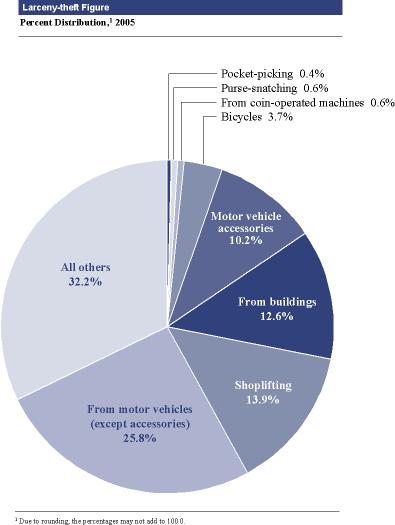The UCR Program defines larceny-theft as the unlawful taking, carrying, leading, or riding away of property from the possession or constructive possession of another. Examples are thefts of bicycles, motor vehicle parts and accessories, shoplifting, pocket-picking, or the stealing of any property or article that is not taken by force and violence or by fraud. Attempted larcenies are included. Embezzlement, confidence games, forgery, check fraud, etc., are excluded.
Expanded offense data are the details of the various offenses that the Program collects beyond the count of how many crimes law enforcement agencies report. These details may include the type of weapons used in a crime, type or value of items stolen, and so forth. In addition, expanded data include trends (for example, 2-year comparisons) and rates per 100,000 inhabitants.

Expanded information regarding larceny-theft is available in the following tables:
Trends (2-year): Tables 12, 13, and 14
Rates (per 100,000 inhabitants): Tables 16, 17, and 18
Offense Analysis: Table 23
Larceny-theft Table, "Larceny-theft, Percent Distribution within Region, 2005"
Contact the Communications Unit of the FBI's Criminal Justice Information Services Division via e-mail at cjis_comm@leo.gov or by telephone at (304) 625-4995.